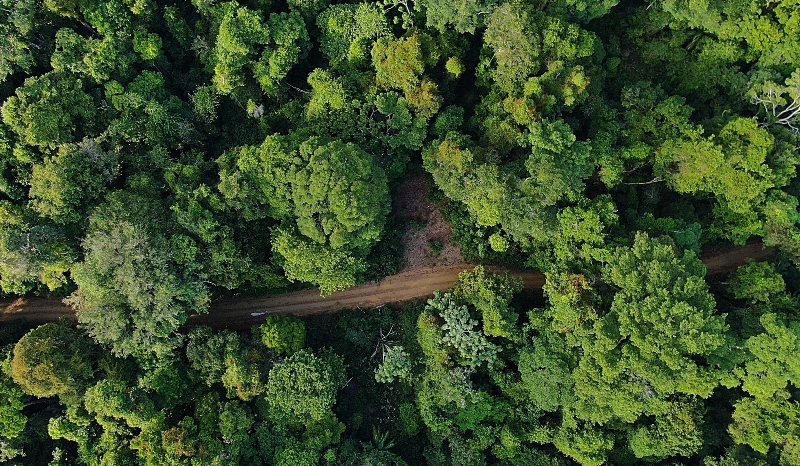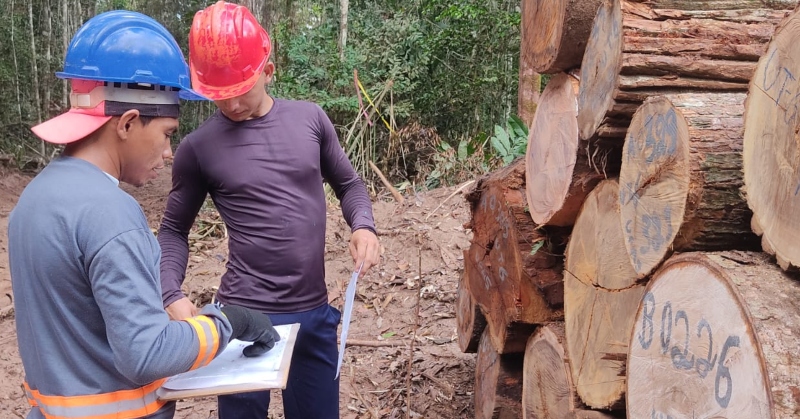Video shows the challenges of community forest management in the Amazon
Video shows the challenges of community forest management in the Amazon
On March 21st, International Day of Forests, the video "Our Sustainable Forests for a Sustainable Future", presented by Embrapa and ITTO (International Organization of Tropical Woods), shows how the communities of the Green Forever Extractive Reserve, located in Porto de Moz, Pará, promote the sustainable use of the forest and dialogue about the challenges of community logging activity in the region. The Sustainable Forest Management technology is the main tool of the communities for the maintenance of biodiversity and productivity of the areas.
Created in 2004, Resex Verde Para Sempre is the largest extractive reserve in Brazil. It has about 1 million and 200 thousand hectares and is home to 183 communities and localities with more than 2,500 families. For the communities, the forest is a source of sustenance, quality of life and hope.
"The forest is saving lives," says Evandro Pinheiro, president of the Cooperative of Agroextractive Producers of Médio Jaurucu. "It's my day-to-day life," says Maria Creusa Ribeiro, president of the Mixed Agroextractivist Cooperative Floresta Sempre Viva Três Rios. "It's the sustenance of my family," says Simael de Andrade, president of the Mixed Agroextractivist Cooperative Nossa Senhora do Perpétuo Socorro do Rio Arimum.
The video, produced by the Bom Manejo 2, Project, shows the trajectory of the Resex communities in guaranteeing the territory and in the sustainable use of the forest. According to Katiuscia Miranda, from the International Institute of Education of Brazil (IEB), Verde Para Sempre is the Conservation Unit that has the most sustainable management plans in the Amazon. "Practically 60% of the managed area approved and authorized in the region by ICMBIo (Chico Mendes Institute of Biodiversity) is in this Resex," she points out.
Researcher Milton Kanashiro, coordinator of Bom Manejo 2 Project and president of Embrapa's portfolio of forestry projects, says that the institution has been working in Resex together with a network of partners to train community members in the use of Sustainable Forest Management techniques and promote dialogue around the sustainable development of the region
One of the most concrete examples of this network is the Community and Family Forest Management Observatory (OMFCF), which brings together 32 organizations, including community associations, cooperatives, teaching, research and other institutions, to promote and strengthen the community forest management agenda. "The Observatory acts as an advocacy from the point of view of communities with the institutions for the government," Kanashhiro explains.
"I'm here in the city, but there's another partnership that's there in the community, there's another one that's in Brasilia, so it's a range that you organize and strengthen yourself," exemplifies Margarida Ribeiro, from the Forest Women's Network.
| Sustainable Forest Management involves exploitation practices of low environmental impact that seek to reproduce the natural cycle of the forest, maintaining biodiversity, productivity, regeneration capacity and other ecological, economic and social functions. |
Community forests
Data from the Community and Family Forest Management Observatory show that the Amazon has more than two million km² of community forests where rural, traditional and indigenous communities live. This network mapped 122 Community Forest Management initiatives in the region involving almost 267,000 families.
Unlike forest concessions in which the State grants a private entity the right to sustainably exploit the public forest, community use involves the management of the territory and natural resources present there by the communities and peoples residing in the place.
The state of Pará, according to the MFCF Observatory, concentrates 82 community forest management initiatives with the participation of 261,000 families in rural settlements, quilombola territories and Sustainable Use Conservation Units. These initiatives involve the sustainable exploitation of timber and non-timber products.
Maintaining this heritage in the present and future is part of the mission of every resident of Resex Verde Para Sempre. "The community takes care of that area where it does the management and this makes the area protected," says Edilene Duarte da Silva, president of the Sustainable Development Committee of Porto de Moz (CDS).
"We don't have to think only about ourselves, we have to think about our children, our grandchildren, we have to think about the future," concludes José Francisco de Jesus, "your Black", president of the Curuminim River Agroextractivist Community Association.
| The video "Floresta da gente" is a production of the project Sustainable Management of Commercial-Scale Production Forests in the Brazilian Amazon - Bom Manejo Project phase 2, coordinated and executed by Embrapa with the financial support of the International Organization of Tropical Woods - ITTO (International Tropical Timber Organization), an intergovernmental organization that promotes sustainable forest management in tropical forests. |
Ana Laura Lima (MTb 1268/PA)
Embrapa Amazônia Oriental
Press inquiries
amazonia-oriental.imprensa@embrapa.br
Phone number: (91) 99110-5115 / 3204-1060
Further information on the topic
Citizen Attention Service (SAC)
www.embrapa.br/contact-us/sac/


